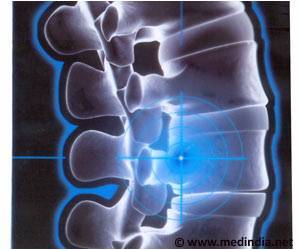
‘The level of microglial activation could be a better predictor of current and future cognitive performance than beta-amyloid levels.’
Tweet it Now
"The 18-kD translocator protein (TSPO) is highly expressed in activated microglia, which makes it a valuable biomarker to assess inflammation in the brain," said Matthias Brendel, MD, MHBA, at Ludwig-Maximilians-University of Munich in Germany. "In our study, we utilized TSPO-PET imaging to determine whether microglial activation had any influence on cognitive outcomes in an amyloid mouse model." In the study, researchers compiled a series of PET images for 10 transgenic mice with beta-amyloid proteins and seven wild-type mice. TSPO PET imaging of activated microglia was conducted at eight, 9.5, 11.5 and 13 months, and beta-amyloid PET imaging was performed at eight and 13 months. Upon completion of the imaging, researchers then subjected the mice to a water maze in which the mice were to distinguish between a floating platform that would hold their weight and one that would sink. The tasks were performed several times a day during a 1.5-week period. Memory performance in the water maze was assessed by measuring the average travel time from the start point to a platform each day of training and by calculating the traveled distance at the last day of training. After completing the water maze task, immunohistochemistry analyses were performed for microglia, amyloid and synaptic density.
Transgenic mice with the highest TSPO PET signal in the forebrain or other areas associated with spatial learning tended to have better cognitive performance in the water maze, while beta-amyloid signals in the same areas of the brain showed no correlation to cognitive outcomes in the maze. Researchers found that an earlier microglial response to amyloid pathology in transgenic mice also protected synaptic density at follow-up. Specifically, transgenic mice with higher TSPO expression at eight months had much better cognitive outcomes in the water maze and higher synaptic density as confirmed by immunochemistry analyses.
"This study provides the first evidence that the level of microglial activation could be a far better predictor of current and future cognitive performance than beta-amyloid levels," noted Brendel. "Keeping the limitations of mouse models in mind, it could be crucial to modify an individual's microglial activation state to ameliorate future cognitive decline. We believe that a balanced microglia activation is crucial for prevention of cognitive impairment."
Advertisement









